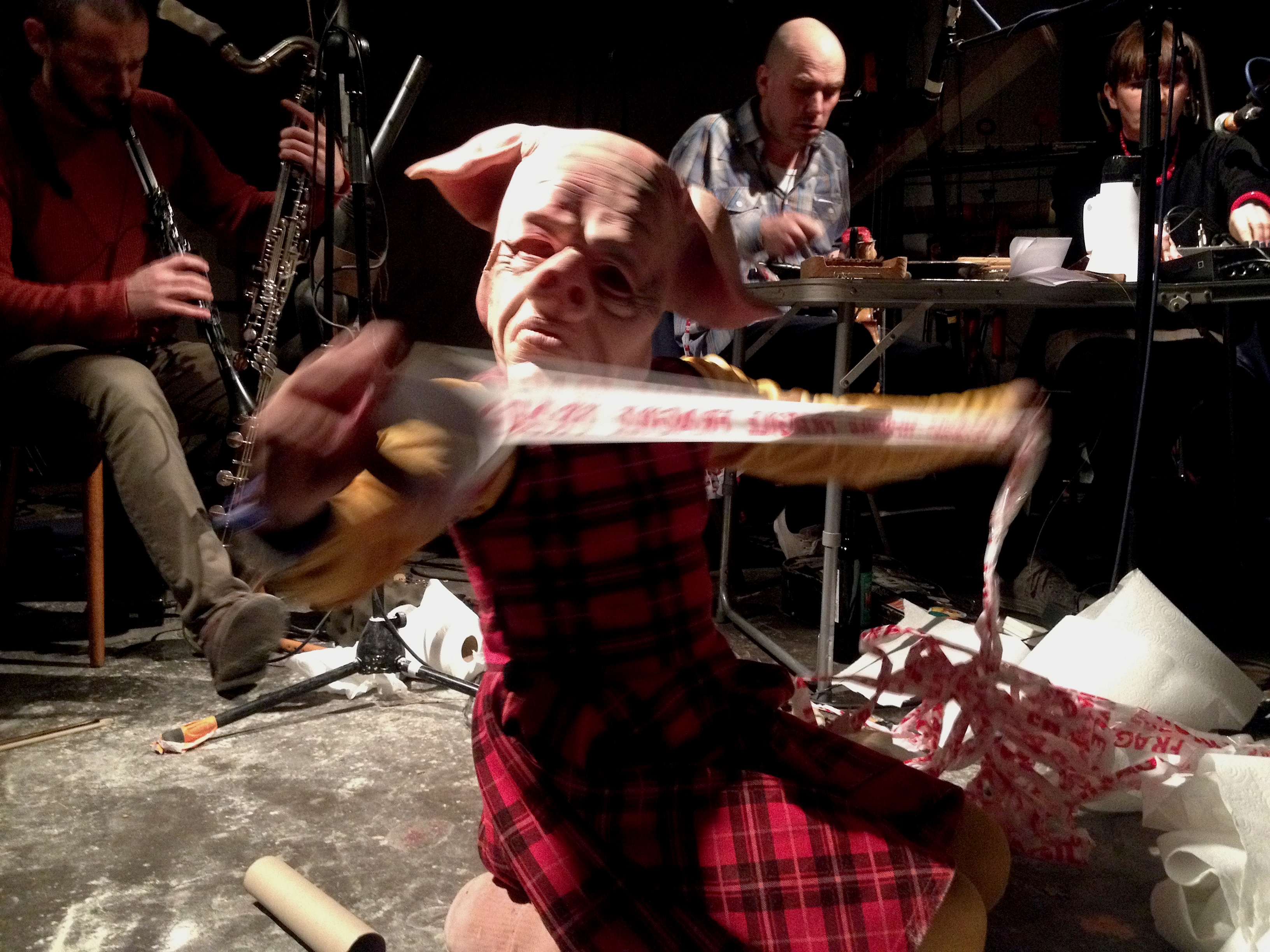Our culture is obsessed with looking at the past. If culture had a body, it would be contorted, bending over its own limbs, straining to catch a glimpse, through the crevices of its wrinkled, obese flesh, of the jagged traces it had left behind. This behaviour is completely understandable. Not only is modern life rubbish, but revisiting history helps us to evaluate the present. A quick scan of the Tate website will reveal a sluggish programme that boasts two retrospectives and a pot-pourri exhibition charting art’s relationship to Empire. All of them bound to be enlightening blockbuster hits, no doubt, but where does that leave the un-average Joe: the art-lover who soaks up the insight pouring out from between the pavement cracks?
Duncan Harrison, the Brighton-based noise and improv artist, observed that everyone who had gathered at Café Oto to celebrate 100 years since the first Dada performance at the Cabaret Voltaire were all too young to have experienced the movement first hand. His laconic attack on our retrograde condition, which featured cassette playback of Alice Cooper’s fifteenth studio album, DaDa, served mostly to amuse. But this was no nostalgia trip. Lost Property’s curation of Non Plus Ultra ensured that all participating artists focused on Dada not as a movement that had been and gone, but one that lives on through the employment of its techniques in contemporary art practice.
These techniques often come in the form of anti-aesthetics, as in the case of Hysteresis, a duo from Hastings who set the standard for self-imposed exile. Their flour-infused gyrations invited incredulous laughter from the audience, before cathartic screaming and the destruction of their hand-built noise-making contraptions elicited acute discomfort for everybody in the room.
There were others who straddled the tightrope stretched between Comedy and Tragedy that evening, and some kept their balance better than others. Thee Bald Knobbers, a cloaked and masked group named after Missouri vigilantes (joined on this occasion by Thee Hairee Kuntz, a sort of mirror-group), wandered in and out of the café with red rope and saxophones, performing rituals that adhered to a secret logic. Later, they attempted to sabotage Graham Duff’s reading by means of a looking-glass protest, waving placards that read “Mama Not Dada”. In between sets, another troupe paraded their birdcage-trapped-faces throughout the venue. Their mute, crying features were highlighted, in kindness, by the green glow of hovering smartphone screens. Two men in balaclavas took centre stage to devour chicken wings in public, but their crass banquet was met with overbearing indifference.
Dr Kersten Glandien’s academic overview of what Dada meant was perhaps the most confounding experience of the evening. Surely everyone present was already aware of Dada’s history? Why else be there? The academic has no place in a house of bandits, unless they agree to the rules of the unruly. If one wishes to hold the ear of a brute, one must speak and act like a brute. Instead, Glandien spoke of “theoretical life being so far away from practical life” and indeed, her lecture struggled with the rabble from the bar, failing to gain any serious traction.
Blood Stereo, on the other hand, commandeered attention like it was 1916 all over again. Composed primarily of disjointed playback, a throttled bass clarinet and a tortured violin, theirs was a noise of surprising serenity. It seemed, at times, as if Blood Stereo’s performance had been carefully composed, and sections of it probably were scored, but there was an element of unrivalled uncertainty to it too. The little piglet who conducted the group captivated the imagination of the audience and succeeded in unifying this strange performance.
So what does Dada mean, if not simply an excuse to act silly in public? Phil Minton’s astounding vocalisations, which clearly take years to master, brought out some ugly heckles from the crowd. Does Dada simply suggest that anything goes, collapsing the barriers between audience and artist to such a degree that it becomes acceptable, or necessary, even, to openly critique what one sees there and then? For all its support of the anti-aesthetic, Dada is not simply about getting away with nonsense. At its heart, Dada was a politically-driven movement that rejected murderous brutality, tired histories and banal cultural platitudes. We may be obsessed with picking our toes, reminiscing of better times, but it’s refreshing to see so many artists applying century-old techniques to work that deals with the present.
Keep up with Lost Property events by going to their website or following them on Twitter.














Great review, and well-deserved praise for Blood Stereo’s Elkka, but I’d take issue with the fact that Hysteresis “elicited acute discomfort for everybody in the room” ~ i quite enjoyed it… I wanted to like Dr Kersten Glandien too, and yes, she was out of place there, but if her lecture had just been a wee bit shorter, it might’ve worked ~ but by the end I just wanted to drop her into a large bowl of custard… Great night though